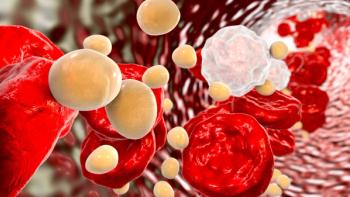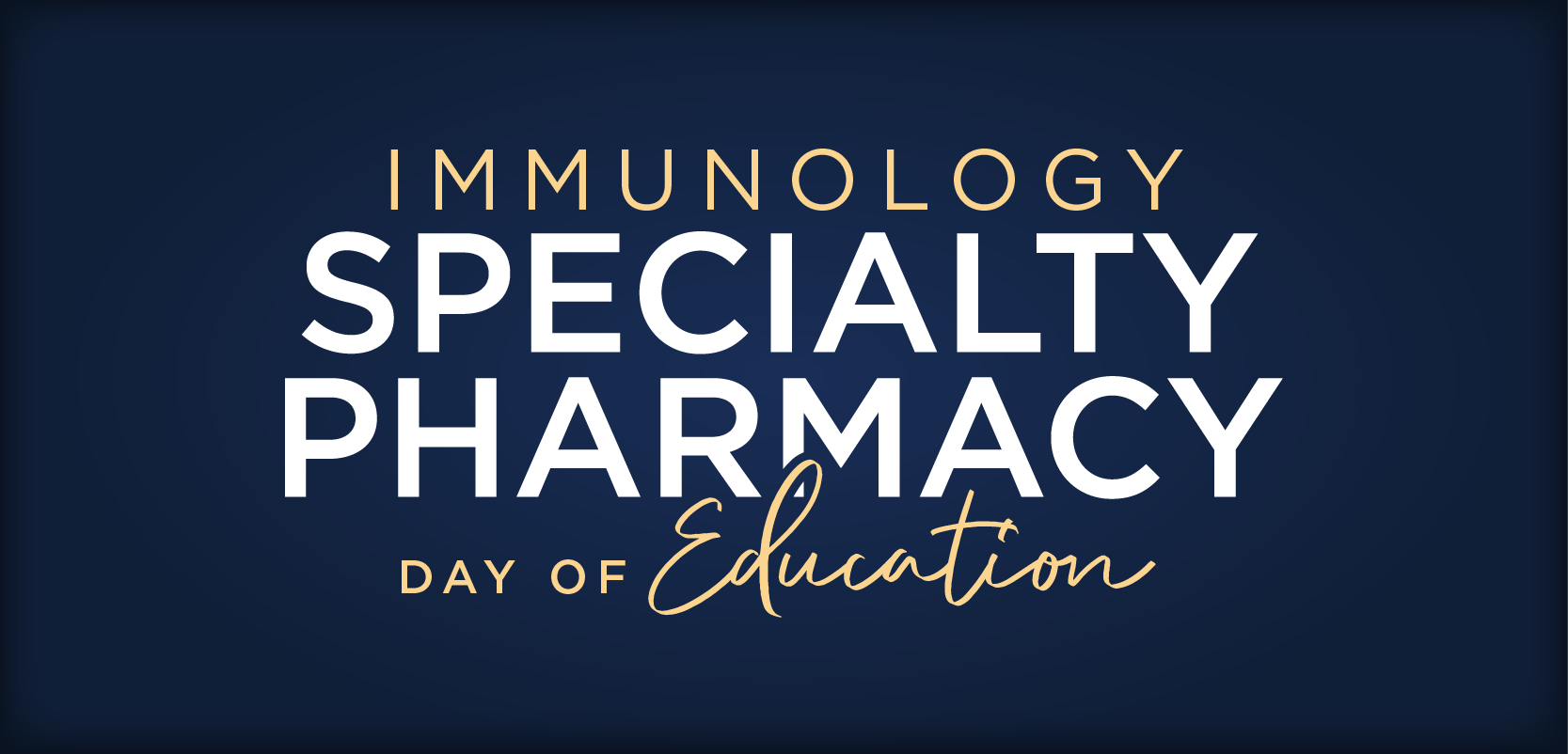
- October 2022 Immunization Supplement
Vaccinations in the Emergency Department: Current and Emerging Practices to Boost Public Health
Piloting new emergency department-based vaccination campaigns and fine-tuning existing programs may reduce morbidity and mortality associated with vaccine-preventable diseases.
Vaccinations are among the most cost-effective preventive services, and they have made tremendous contributions to public health. Vaccine use has led to the eradication of illnesses, such as smallpox and the widespread elimination of polio, as well as a reduced prevalence of tetanus over the past several decades.1 Despite this progress, in the United States 1.28% of children have received no vaccines by 23 months of age and adults 19 years and older have composite vaccination rates of approximately 20%.2,3
Vaccination rates are higher among individuals with internet access and
higher health literacy, those residing in urban areas, and those who have incomes above the poverty line.3 In turn, this leaves a more vulnerable portion of the population unvaccinated. Patients with health care–related barriers often use the emergency department (ED) for preventive care.4 Patients without a usual place of care are at an increased risk of inadequate vaccination coverage.3 Yet vaccinations, with the exception of tetanus, are infrequently administered in the ED.5 EDs are an underutilized resource for providing vaccinations to promote public health, and the most commonly reported ED-based vaccination campaigns are discussed below.
Tetanus and Rabies Vaccines
Patients commonly present to the ED after a traumatic injury. As part of standard wound care management, tetanus toxoid–containing vaccines are recommended if it has been more than 5 years since the patient’s last tetanus toxoid–containing vaccine. Tetanus immunoglobulin also should be administered to patients who have never received a tetanus vaccine.6 Millions of tetanus vaccines are administered annually in EDs. Indeed, tetanus vaccines comprise more than 93% of all vaccines administered in the ED.5 Tetanus vaccinations help to prevent infection and death caused by Clostridium tetani, which is abundant in soil; its spores enter the body through open wounds. C tetani toxins affect the peripheral and central nervous system, leading to unopposed muscle contraction (commonly called lockjaw), spasms, and seizures.6
Tetanus vaccinations, including those administered through ED-based programs, have reduced annual cases and fatalities in the United States by 92.9% and 99.2%, respectively.7 In the United States, tetanus is an infrequent disease and primarily occurs in individuals who have never been vaccinated or who did not maintain their 10-year booster shots.6 With approximately 22% of adults ordered for a tetanus vaccine in the ED despite having received 1 within 5 years, clinical decision support alerts for tetanus vaccinations can help reduce costs associated with unnecessary vaccinations.8
Additionally, having the combined tetanus toxoid, reduced diphtheria toxoid, and acellular pertussis vaccine (Tdap) as the preferred tetanus vaccine for adolescents and adults in EDs, especially at institutions designated trauma centers, can help to increase pertussis immunity in the community.9
Animal bites requiring rabies postexposure prophylaxis (PEP) account for nearly 50,000 initial ED visits annually in the United States and a cost of approximately $165 million dollars (not including hospital treatment or wound care).10 The rabies virus is spread through the saliva of infected animals such as bats, foxes, and dogs following a bite or nonbite exposure.10,11 Rabies viral encephalitis is a rare, nearly universally fatal diagnosis, but it is a preventable disease with timely postexposure prophylaxis. Because of rabies PEP, fewer than 3 cases of rabies in humans are reported annually in the United States. Individuals who have never been vaccinated against rabies should receive rabies immune globulin 20 units/kg intramuscularly (IM) once on day 0 and a 4-dose vaccine series on days 0, 3, 7, and 14. Patients who are immunocompromised may receive an additional fifth dose of the vaccine on day 28. Patients who have been previously vaccinated should only receive a 2-dose PEP vaccination series.11
A pharmacist-driven rabies PEP protocol can increase cost savings by decreasing rates of inappropriate rabies PEP, because not all animal exposures warrant it.12 Similarly, applying clinical decision support to rabies PEP can improve the patient selection, dosing, timing, and administration
of rabies immune globulin and vaccines.13 Partnering with an infectious disease clinic for completion of the vaccine series can help reduce overall costs and ED utilization for subsequent visits related to rabies PEP vaccination.
PEP Following Exposure to Occupational or Nonoccupational Blood or Body Fluid
Patients commonly present to the ED for treatment following occupational or nonoccupational exposures to blood and body fluids.14 In addition to the potential exposure to sexually transmitted infections and HIV,15,16 patients also are at risk of contracting hepatitis B virus (HBV), which can result in liver disease, including fulminant hepatitis, cirrhosis, hepatocellular carcinoma, and death.15 Although there are regional variations, results from a survey of ED physicians indicated that they offer PEP for HBV inconsistently to at-risk patients. ED physicians offered the HBV vaccine to 50% of patients following a consensual sexual encounter, 77% after a sexual assault, and 86% with a needle stick injury.14 However, surveys of ED physicians may overestimate how often PEP for HBV is offered. In 1 study, hepatitis B vaccine administration increased from 8.5% to 22.7% following the implementation of a standardized ED order set for sexual assaults.17 Guidelines for occupational and nonoccupational exposures recommend PEP with a hepatitis B vaccine in certain situations,15,16 which are applicable to the ED care setting. Specifically, after an exposure related to consensual or nonconsensual sexual contact, the HBV vaccine series is recommended if the source patient is known to have HBV or HBV status is unknown and the exposed individual has not completed the HBV vaccine series or is known to have postvaccination testing conferring inadequate protection (hepatitis B surface antibody [HBsAb] < 10 mIU/mL). Hepatitis B immune globulin (HBIG) 0.06 mL/kg IM once also should be administered with the first HBV vaccine dose to patients not fully vaccinated who have been exposed to body fluids from an HBV-infected source. When a patient has been exposed to a known HBV-infected source, a single HBV vaccine booster is indicated if the patient has completed the HBV vaccination series but has not had postvaccination testing to confirm protection.16
For occupational exposures, hepatitis B serology for the source and exposed patient as well as the exposed patient’s vaccination history determine the PEP course. Unvaccinated or incompletely vaccinated exposed patients (ie, source positive for hepatitis B surface antigen [HbsAg] or unknown) should receive HBIG once plus the HBV vaccine series. In exposed individuals who have completed the HBV vaccine series, patients with unknown response (HBsAb unknown) or incomplete response (HBsAb < 10 mIU/mL) should be administered HBIG and revaccinated against HBV.15,16 HBIG and the HBV vaccine should be administered as soon as possible to prevent HBV infection; however, their effectiveness is unknown when given more than 7 days after an exposure.15 Regardless of HBV vaccine immunization in the ED for occupational or nonoccupational exposure, most patients will need subsequent follow-up appointments to review hepatitis B serology results and assess the need to complete the 3-dose HBV vaccine series (baseline, 1 month, and 6 months) or 2-dose recombinant HBV vaccine series (baseline, and 4 or 6 weeks depending on patient age).15,16
Following sexual assault, patients are at risk of contracting human papillomavirus (HPV). Later in life, certain HPV infections are responsible for most cervical, vulvar, vaginal, anal, and oropharyngeal cancers. Advisory Committee on Immunization Practices guidelines recommend HPV vaccination in males and females aged 9 to 26 years. A 2-dose vaccine schedule with the second dose administered 6 to 12 months after the first is recommended for individuals younger than 15 years. A 3-dose vaccine series at 0, 1 to 2, and 6 months is recommended for patients 15 years or older or immunocompromised persons 9 years or older. Vaccination may offered to adults aged 27 to 45 years not vaccinated previously.16 Surveys of emergency medicine physicians, patients, and parents indicate support for
of HPV vaccination in the ED.18,19 Racial, ethnic, and socioeconomic disparities in HPV awareness were noted in those surveyed.18 Inclusion of HPV vaccines in order sets for sexual assaults was found to increase the rate of vaccination in the ED.19 Offering HPV vaccinations to individuals presenting after consensual or nonconsensual sexual encounters can help to increase vaccination rates in the community.
Outbreak Response
In the United States, person-to-person spread of the hepatitis A virus (HAV) is more common than through ingestion of contaminated food or water. In the past 5 years, there has been a rise in person-to-person transmission of HAV, with more than 44,000 outbreak cases across the United States. Outbreaks primarily occur in individuals who misuse drugs, are experiencing homelessness, are currently or were recently incarcerated, engage in anal intercourse, or have chronic liver disease.20 A recent analysis determined that outbreaks associated with person-to-person HAV transmission are associated with increased hospitalization rates compared with foodborne outbreaks, which would also suggest increased costs.21 A single dose
of the hepatitis A vaccine was effective for controlling outbreaks,20 and faster time to vaccination campaign starts are associated with shorter outbreak durations. ED-based hepatitis A vaccination campaigns have been an effective strategy for controlling local outbreaks, and clinical decision support alerts help providers streamline vaccination of at-risk individuals.22
Mass vaccination is essential to ending the COVID-19 pandemic, which has led to hundreds of millions of cases and millions of fatalities worldwide. It is estimated that COVID-19 vaccinations prevented nearly 20 million deaths during the first year of vaccine availability.23 Despite the high efficacy of the vaccines, COVID-19 vaccine hesitancy remains high among certain populations and varies by factors such as sex, age, race, socioeconomic status, and education level. There are few ED-based COVID-19 vaccine campaigns, but the ones that have been implemented successfully reached hundreds of highly susceptible, vulnerable patient populations that have expressed vaccine hesitancy or experienced disparities in COVID-19 disease severity and access to vaccination.24 In addition, the combination of traditional and ED-based COVID-19 vaccination campaigns may reduce local transmission of COVID-19 and health care utilization associated with the acute disease as well as its sequelae.
Preventive Care
In the United States each year, approximately 40 million cases of influenza lead to nearly 21 million medical visits, nearly 2 million ED visits, more than 700,000 hospitalizations, and 12,000 to 52,000 deaths.25,26 Furthermore, influenza infections increase health care utilization through health care–associated influenza transmission to patients and staff and by exacerbating chronic conditions such as asthma.26 In 2015, the average total economic burden of influenza was $11.2 billion per year, and direct medical costs accounted for nearly 29% of the total economic burden.25 Influenza vaccines are recommended annually; a standard-dose vaccine is recommended for patients individuals than 65 years, and a higher-dose vaccine is recommended for individuals 65 years and older.26 Historically, ED-based influenza vaccination campaigns were uncommon.5 However, such programs have recently been successfully implemented at various institutions. The size of these adult or pediatric ED vaccination programs vary from fewer than 100 patients to thousands of patients per season.27
In addition to influenza, pneumococcal pneumonia places a heavy burden on the health care system with an estimated 150,000 hospitalizations and $3.5 billion in direct medical costs each year in the United States.28 Pneumococcal conjugate vaccines (PCV13, PCV15, and PCV20) and the pneumococcal polysaccharide vaccine (PPSV23) are recommended across a variety of age groups and medical conditions. The appropriate vaccine and vaccination interval are determined by patient age, medical conditions, and receipt of previous pneumococcal vaccines.29 The majority of patients with invasive pneumococcal disease (IPD) have not received appropriate vaccination, and at least 55% of unvaccinated adults with IPD had 1 or more missed opportunities for vaccinations.3 These patients often frequented EDs
prior to IPD diagnosis,3,30 and thus EDs represent a prime location for pneumococcal vaccination campaigns. After adjusting for inflation, ED-based pneumococcal vaccination programs were associated with approximately $700,000 in cost savings.30 Despite the cost savings and reductions in morbidity and mortality associated with vaccinations, few EDs have implemented a pneumococcal vaccination program.5 Given the complicated vaccine selection and dosing schedule,29 clinical decision support can aid in the identification of patients and reduce errors.
Lessons Learned From ED-Based Vaccination Programs
ED-based vaccination programs offer many benefits to patients, communities, and health care systems. Because only 20% of adults in the United States are up to date with their vaccinations,3 offering them vaccinations in the ED has the potential to reach large volumes of unvaccinated patients. The downstream impacts include reductions
in infection in the community, morbidity, mortality, ED overcrowding, health care utilization, and costs.1,2,26 ED-based vaccination programs improve health equity by reaching racially, ethnically, and economically diverse patients.18,24,27 Additionally, the hospital also may benefit from reimbursement for vaccinations administered in the ED. One program generated nearly $90,000 in revenue from the vaccination of approximately 4500 patients over 2 influenza seasons.27
Despite ED patient and provider support for vaccination campaigns,17,18 there are challenges to successful program implementation. Time, resources, cost, vaccine stocking in the ED, education, ED overcrowding, concerns about reactions to the vaccine, belief that preventative health is more appropriate in the primary care setting, and arrangement of follow-up care are commonly cited barriers.8,17,19,27 Clinical decision support within the electronic medical record can help overcome some of these barriers.8,13,17,19,22,27 Developing smaller, selective vaccination programs in the ED for individuals who are at high risk may improve feasibility. Piloting new ED-based vaccination campaigns and fine-tuning existing programs may
reduce morbidity and mortality associated with vaccine-preventable diseases through the cumulative expansion of local and national vaccination rates.
About The Authors
Deepika Sivakumar, PharmD, BCPS, is a clinical pharmacist II in emergency medicine at Boston Medical Center in Massachusetts.
Natalija M. Farrell, PharmD, BCPS, DABAT, FAACT, is the pharmacy clinical coordinator for emergency medicine & toxicology and the director of PGY2 Emergency Medicine in the Department of Pharmacy at Boston Medical Center in Massachusetts.
References
1. Greenwood B. The contribution of vaccination to global health: past, present and future. Philos Trans R Soc Lond B Biol Sci. 2014;369(1645):20130433. doi:10.1098/rstb.2013.0433
2. Daley MF, Reifler LM, Shoup JA, et al. Temporal trends in undervaccination: a population-based cohort study. Am J Prev Med. 2021;61(1):64-72. doi:10.1016/j.amepre.2021.01.037
3. Lu PJ, Hung MC, Srivastav A, et al. Surveillance of vaccination coverage among adult populations – United States, 2018. MMWR Surveill Summ. 2021;70(3):1-26. doi:10.15585/mmwr.ss7003a1
4. Primm K, Muraleetharan D, Gilreath T. Use of emergency departments for preventative care among adults in the United States: estimates from the 2017 National Health Interview Survey. J Emerg Med. 2019;57(4):578-586. doi:10.1016/j.jemermed.2019.06.004
5. Pallin DJ, Muennig PA, Emond JA, Kim S, Camargo Jr CA. Vaccination practices in U.S. emergency departments, 1992-2000. Vaccine. 2005;23(8):1048-1052. doi:10.1016/j.vaccine.2004.06.053
6. Tetanus. For clinicians. Centers for Disease Control and Prevention. August 29, 2022. Accessed September 22, 2022. https://www.cdc.gov/tetanus/clinicians.html#wound-management
7. Roush SW, Murphy TV, Vaccine-Preventable Disease Table Working Group. Historical comparisons of morbidity and mortality for vaccine-preventable diseases in the United States. JAMA. 2007;298(18):2155-2163. doi:10.1001/jama.298.18.2155
8. Dutta S, McEvoy DS, Stump T, et al. Clinical decision support reduces unnecessary tetanus vaccinations in the emergency department. Ann Emerg Med. 2021;78(3):370-380. doi:10.1016/j.annemergmed.2021.02.021
9. Yorkgitis BK, Timoney G, Salim A, et al. Pertussis vaccination in adult trauma patients: are we missing an opportunity? Surgery. 2015;158(3):602-607. doi:10.1016/j.surg.2015.03.060
10. Whitehouse ER, Person MK, Brown CM, Slavinski S, Rao AK, Blanton
JD. Evaluating surveillance for and estimating administration of rabies postexposure prophylaxis in the United States, 2012-2018. PLoS Negl Trop Dis. 2021;15(10):e0009878. doi:10.1371/journal.pntd.0009878
11. Rupprecht CE, Briggs D, Brown CM, et al; Centers for Disease Control and Prevention. Use of a reduced (4-dose) vaccine schedule for postexposure prophylaxis to prevent human rabies: recommendations of the advisory committee on immunization practices. MMWR Recomm Rep. 2010;59 (RR-2):1-9.
12. Spelts R, McAllister M, Baxley J, et al. Does a pharmacist-driven protocol increase appropriate prescribing of rabies postexposure prophylaxis? J Emerg Med. 2020;59(3):452-458. doi:10.1016/j.jemermed.2020.06.004
13. Yuan F, Iso T, Rizk E, et al. Implementation of clinical decision support on emergency department delivery of human rabies immune globulin. JAMA Netw Open. 2022;5(6):e2216631. doi:10.1001/jamanetworkopen.2022.16631
14. Merchant RC, Keshavarz R. Patterns in the offering of hepatitis B prophylaxis by US emergency department physicians. Infect Control Hosp Epidemiol. 2006;27(7):764-766. doi:10.1086/504959
15. Schillie S, Vellozzi C, Reingold A, et al. Prevention of hepatitis B virus infection in the United States: recommendations of the Advisory Committee on Immunization Practices. MMWR Recomm Rep. 2018; 67(1):1-31. doi:10.15585/mmwr.rr6701a1
16. Workowski KA, Bachmann LH, Chan PA, et al. Sexually transmitted infections treatment guidelines, 2021. MMWR Recomm Rep. 2021; 70(4):1-187. doi:10.15585/mmwr.rr7004a1
17. Silva-Nash J, Bordelon S, Searcy SA, Dare RK. Standardizing HIV post- exposure prophylaxis in the emergency department following sexual assault. HIV Med. 2022;23(3):268-273. doi:10.1111/hiv.13196
18. Millen JC, Ginde AA, Anderson AT, Fang P, Camargo Jr CA. Multicenter study of knowledge about human papilloma virus and attitudes among emergency department patients. J Pediatr Adolesc Gynecol. 2009;22(6): 356-359. doi:10.1016/j.jpag.2009.03.001
19. Deutsch SA, Benyo S, Xie S, et al. Addressing human papillomavirus prevention during pediatric acute sexual assault care. J Forensic Nurs. 2018;14(3):154-161. doi:10.1097/JFN.0000000000000209
20. Widespread outbreaks of hepatitis a across the U.S. Centers for Disease Control and Prevention. June 13, 2022. Accessed July 25, 2022. https://www.cdc.gov/hepatitis/outbreaks/2017March-HepatitisA.htm
21. Hofmeister MG, Xing J, Foster MA, et al. Hepatitis A person-to-person outbreaks: epidemiology, morbidity burden, and factors associated with hospitalization-multiple states, 2016-2019. J Infect Dis. 2021;223:426-434. doi:10.1093/infdis/jiaa636
22. Castillo EM, Chan TC, Tolia VM, et al. Effect of a computerized alert on emergency department hepatitis A vaccination in homeless patients during a large regional outbreak. J Emerg Med. 2018;55:764-768. doi:10.1016/j.jemermed.2018.09.004
23. COVID-19 Excess Mortality Collaborators. Estimating excess mortality due to the COVID-19 pandemic: a systematic analysis of COVID-19-related mortality, 2020-21. Lancet. 2022;399(10334):1513-1536. doi:10.1016/S0140- 6736(21)02796-3
24. Heinert SW, McCoy J, Eisenstein R, Rowley J. Reaching the hard to reach: characteristics of patients who received a COVID-19 vaccine in the emergency department. Acad Emerg Med. 2021;28(9):1081-1083. doi:10.1111/ acem.14334
25. Putri WCWS, Muscatello DJ, Stockwell MS, Newall AT. Economic burden of seasonal influenza in the United States. Vaccine. 2018;36(27):3960-3966. doi:10.1016/j.vaccine.2018.05.057
26. Grohskopf LA, Alyanak E, Ferdinands JM, et al. Prevention and control
of seasonal influenza with vaccines: recommendations of the Advisory Committee on Immunization Practices, United States, 2021-22 influenza season. MMWR Recomm Rep. 2021;70(5):1-28. doi:10.15585/mmwr.rr7005a1
27. Baumer-Mouradian SH, Servi A, Kleinschmidt A, et al. Vaccinating in the emergency department, a model to overcome influenza vaccine hesitancy. Pediatr Qual Saf. 2021;6(2):e430. doi:10.1097/pq9.0000000000000430
28. Huang SS, Johnson KM, Ray GT, et al. Healthcare utilization and cost of pneumococcal disease in the United States. Vaccine. 2011;29(18):3398-3412. doi:10.1016/j.vaccine.2011.02.088
29. Vaccines and preventable diseases. Pneumococcal vaccination: summary of who and when to vaccinate. CDC. January 24, 2022. Accessed September 22, 2022. https://www.cdc.gov/vaccines/vpd/pneumo/hcp/who-when-to-vaccinate.html
30. Stack SJ, Martin DR, Plouffe JF. An emergency department-based pneumococcal vaccination program could save money and lives. Ann Emerg Med. 1999;33(3):299-303. doi:10.1016/s0196-0644(99)70366-5
Articles in this issue
Newsletter
Stay informed on drug updates, treatment guidelines, and pharmacy practice trends—subscribe to Pharmacy Times for weekly clinical insights.



















































































































































































































